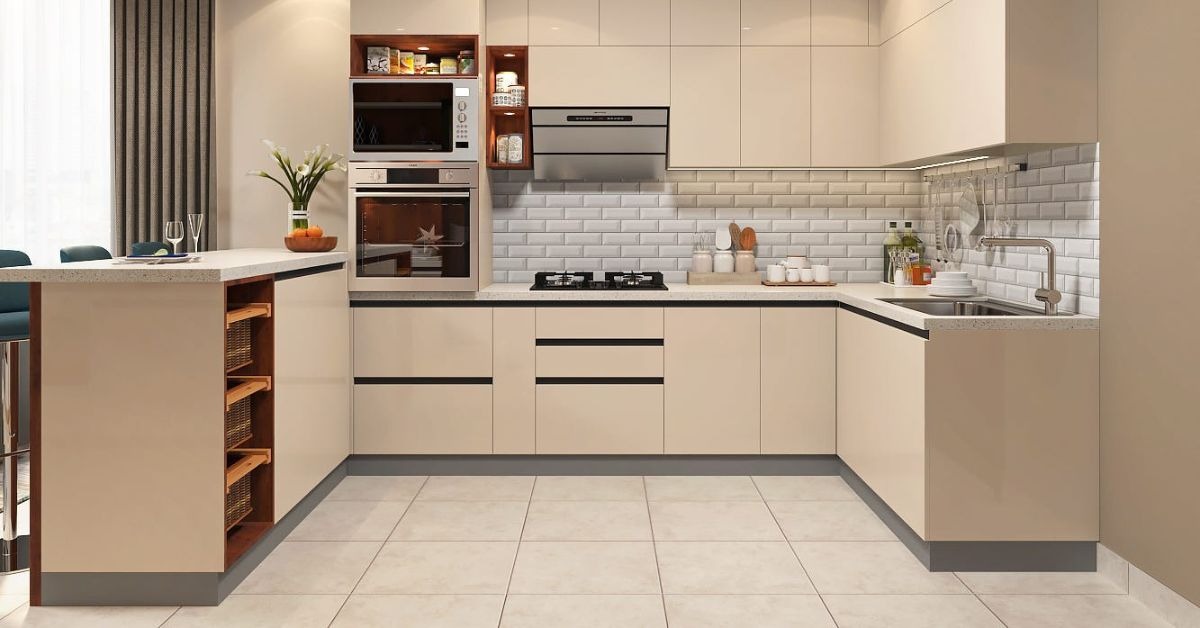Best Materials for Durable and Beautiful Kitchen Cabinets

When it comes to creating a kitchen that stands the test of time, choosing the right materials for your cabinets is one of the most important decisions you will make. Cabinets are not only the backbone of the kitchen’s functionality but also a central feature in its overall appearance. They need to combine strength with style, offering long-lasting durability while complementing the aesthetic of your home. From modern minimalistic looks to classic warmth, the material you select plays a defining role in shaping both the look and the lifespan of your kitchen.
Durability is particularly essential in kitchens that see heavy daily use, where cabinets endure constant handling, exposure to heat, and occasional spills. Beyond practicality, however, the finish and texture of cabinet materials set the tone for the entire room, ensuring that the space feels inviting yet efficient. Understanding which options are available and how they perform is key to making an informed choice that balances cost, beauty, and resilience.
Solid Wood Cabinets
Solid wood remains one of the most traditional and widely admired materials for kitchen cabinets. Its natural grains, rich textures, and timeless appeal give any kitchen a sense of warmth and sophistication. Hardwoods such as oak, maple, and cherry are commonly used because of their strength and longevity. These woods resist wear and can withstand years of use without losing their charm. Additionally, wood can be refinished or repainted, making it an excellent choice for homeowners who might want to refresh their kitchen’s look after a few years.
However, wood is not without challenges. It can expand or contract due to moisture and temperature changes, which sometimes leads to warping. Proper sealing and maintenance are therefore crucial. Despite these factors, solid wood cabinets remain a premium option for homeowners looking for beauty paired with unmatched durability. The cost of solid wood is usually higher, but the investment pays off through longevity and timeless appeal.
Plywood Cabinets
Plywood has emerged as one of the most reliable engineered materials for cabinets. It is created by bonding thin layers of wood veneer with adhesives, forming a structure that is both lightweight and incredibly strong. The cross-grain layering technique used in plywood gives it resistance to cracking, shrinking, and warping, which makes it highly suitable for kitchens exposed to varying conditions.
One of the biggest advantages of plywood is that it offers durability without the hefty price tag of solid wood. It also provides a smooth surface for laminates and veneers, which allows homeowners to achieve different styles without compromising strength. Plywood is often used in high-quality kitchens where both endurance and cost-efficiency matter. Its ability to hold screws and fasteners tightly also ensures sturdier cabinets that can handle heavy loads with ease.
Medium Density Fiberboard (MDF) Cabinets
Medium Density Fiberboard, or MDF, has become increasingly popular in contemporary kitchens. MDF is an engineered material made by compressing wood fibers with resin under high pressure. Its strength lies in its uniform surface, which is free from knots or grains, making it ideal for painting and for modern designs with smooth finishes. It is also less likely to crack or chip compared to natural wood, and its affordability makes it a practical option for many households.
Despite its benefits, MDF is more susceptible to water damage if not properly sealed, which makes it less ideal for areas exposed to constant moisture. However, when used correctly with protective coatings, it delivers both durability and aesthetics. For homeowners seeking sleek, painted cabinets or intricate details in the design, MDF provides a cost-effective yet attractive solution.
Particle Board Cabinets
Particle board is one of the most budget-friendly materials for cabinets. It is manufactured by compressing wood chips, sawdust, and resin into panels. While it is less durable compared to plywood or MDF, it is often used in combination with laminates or veneers to create a finished look that is visually appealing at a lower cost. For homeowners on a tight budget or for secondary kitchens, such as in rental units or vacation homes, particle board can serve as a practical choice.
The main drawback of particle board is its lower resistance to moisture and heavy loads. It tends to sag under weight if not supported properly. However, advancements in manufacturing have improved the quality of particle boards, making them more reliable than in the past. When paired with high-quality finishes and used with care, they can still provide a decent lifespan in the kitchen.
Laminate Finishes
Laminate finishes are not a material for the cabinet body itself but play a critical role in enhancing durability and beauty. Laminates are created by pressing thin layers of plastic resin and paper together, resulting in a surface that is resistant to scratches, heat, and stains. They are available in an extensive variety of colors, patterns, and textures, from glossy modern looks to wood-like finishes that mimic natural grains.
When applied to materials like plywood or MDF, laminates add a protective shield that makes cabinets more resilient and easier to clean. They are especially suitable for modern households where convenience and easy maintenance are priorities. Laminates also allow homeowners to experiment with bold colors or minimalist themes, making them a versatile option for achieving different styles.
Veneer Finishes
Veneer is another popular finishing option, particularly for those who want the look of natural wood without the cost of solid wood cabinets. Veneers are thin slices of real wood applied to surfaces such as plywood or MDF. They preserve the texture and richness of wood while reducing overall material expenses. Veneer-finished cabinets strike a perfect balance between luxury and practicality, giving kitchens a warm, authentic wooden appearance.
Care is needed when maintaining veneer finishes, as they are more delicate than laminates. Excessive moisture or rough handling can damage the thin surface layer. With proper care, however, veneer cabinets bring elegance and sophistication to any kitchen design, often bridging the gap between affordability and style.
Stainless Steel Cabinets
For a contemporary and industrial appeal, stainless steel cabinets are a standout choice. They are highly durable, resistant to water and heat, and exceptionally easy to clean. Unlike wood or engineered boards, stainless steel does not warp, crack, or expand. This makes it an ideal option for households that prioritize hygiene and longevity.
Stainless steel cabinets, however, do come with a higher price tag and can sometimes show fingerprints and scratches. Yet, many homeowners appreciate their sleek, modern look and unmatched strength. They are especially favored in professional kitchens or luxury modern homes where function and design meet seamlessly.
Choosing the Right Material for Your Kitchen
The decision about which material to use for cabinets depends on several factors, including budget, style preferences, and how much wear and tear the kitchen is expected to face. For instance, families who cook frequently may want to invest in plywood or solid wood for added durability. Those seeking a modern look on a moderate budget might prefer MDF with laminate finishes. Stainless steel could be the right option for a bold, long-lasting statement.
In regions where cost comparisons matter greatly, such as when considering kitchen design in Pakistan with prices, homeowners need to carefully weigh their options. Materials vary widely in terms of affordability and quality, and choosing the right one ensures that the kitchen remains both functional and stylish for years to come.
Final Thoughts
Kitchen cabinets are more than just storage spaces; they define the personality and usability of one of the most important rooms in the home. By selecting the right material, homeowners can strike the perfect balance between aesthetics, durability, and cost. From the timeless charm of solid wood to the modern sophistication of stainless steel, each option offers unique benefits.

